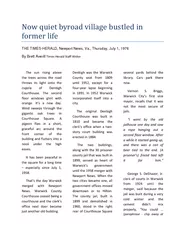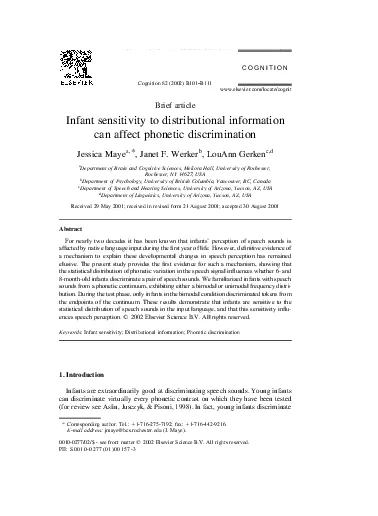PDF-THE TIMES HERALD Newport News Va
Author : lois-ondreau | Published Date : 2015-05-10
Thursday July 1 1976 By Brett Averill Times Herald Staff Writer The sun rising above the trees across the road throws its light onto the cupola of Denbigh Courthouse
Presentation Embed Code
Download Presentation
Download Presentation The PPT/PDF document "THE TIMES HERALD Newport News Va" is the property of its rightful owner. Permission is granted to download and print the materials on this website for personal, non-commercial use only, and to display it on your personal computer provided you do not modify the materials and that you retain all copyright notices contained in the materials. By downloading content from our website, you accept the terms of this agreement.
THE TIMES HERALD Newport News Va: Transcript
Thursday July 1 1976 By Brett Averill Times Herald Staff Writer The sun rising above the trees across the road throws its light onto the cupola of Denbigh Courthouse The second floor windows glint with 57725577405760257718576805. newportrestorationorg Part I - Introduction. Presented by. Yehuda ben Moshe, Elmet Herald. Introduction. What do SCA Heralds do?. Book Heraldry. Names. Armory. Voice Heraldry. Court. Tournament. Silent. Other. Order of Precedence. 1964. By: Jonathan O’Connell. DRAMA STARTS THE YEAR. Two students are kicked out for being together past the set hours.. The Herald. , . Vol.. L. XXXV . Jannary . I. 0, 1964 No. 12. The Interfraternity Council is scorned.. in the 1960s. Mei Yuen Ho. Research Project . U.S. Census Bureau. Historical Poverty Tables. First page of the Civil Rights Act of 1964. Fred . Powledge. , New York Times, 8 March 1964. . The New York Times. Glory to the new-born King!. Peace on earth and mercy mild,. God and sinners reconciled. !. Joyful. , all ye nations, rise,. Join the triumph of the skies;. With . th. ' angelic host proclaim. Christ is born in Bethlehem. Number of readers (000s). Source: NRS 12 monthly release data. Base: Scotland. Lothians. /Borders/Dumfries & . Galloway. The Times = . 15,000. The Scotsman = . 47,000 . The Herald = . 11,000. Tayside & Fife . . Hark! The herald angels sing, "Glory to the newborn king;. Peace on earth and mercy mild, God and sinners reconciled.". Joyful, all you nations, rise; Join the triumph of the skies;. With angelic hosts proclaim, "Christ is born in Bethlehem!". Camille Eva Ben H Omar Colin Newport Who was Newport? Christopher Newport was born in 1561 and died in 1617. His job was a privateer and navigator. A privateer and navigator is similar to a pirate except he fought the pirates. While he was fighting he lost his hand and replaced it with a hook. Stefan Meyer Institute, Vienna. Hadron 2015, Newport News. SIDDHARTA results and implications of the results on . antikaon. -nucleon interaction. . P24756-N20. Content. Hadronic. . atoms. . as. . Last Name First Nam Organization E-mail Phone #s Bannon Rick The Reflector (Battleground) rick@thereflector.com 360-723-5783 Blake Ryan The Spokesman-Review (Spokane) ryan.blake@wsu.edu 509-572-8242 B York Suffolk Windsor Rutland Litchfield Berkshire Bristol Hartford Merrimack Franklin Essex Windham Middlesex Cheshire Fairfield Plymouth Hillsborough Sullivan Dutchess Hampden Bennington Tolland Rock Cognition822002B101B111wwwelseviercom/locate/cognit0010-0277/02/-seefrontmatter2002ElsevierScienceBVAllrightsreservedPIIS0010-02770100157-3CorrespondingauthorTel1-716-275-7192fax1-716-442-9216E-mailad VIBeUsers ManualiiWarrantyNewport Corporation warrants that this product will be free from defects in material and workmanship and will comply with Newports published specifications at thetime of sale Elite vs. masses. Mass media in the United States tended to separate into streams by the late 1800s.. On the one side, you had the sober press for . a more . elite . audience, . such as the . New York Times..
Download Document
Here is the link to download the presentation.
"THE TIMES HERALD Newport News Va"The content belongs to its owner. You may download and print it for personal use, without modification, and keep all copyright notices. By downloading, you agree to these terms.
Related Documents














